#Extragalactic
Text
Galactic Gazetteer: Noss

Type: desert planet
Suns: three
Location: Galaxy 4
Status: destroyed
Visited by: the First Doctor, Vicki and Steven
Appearance: Galaxy 4 (1965)


Fun fact: a Drahvin ship attacked a Rill vessel and both crashed on the planet, which was unstable and going to explode in two days.
Another fun fact: this planet doesn't actually have a name, but Gary Russell called it Noss when he was working on the animated version and that's good enough for me.
7 notes
·
View notes
Text


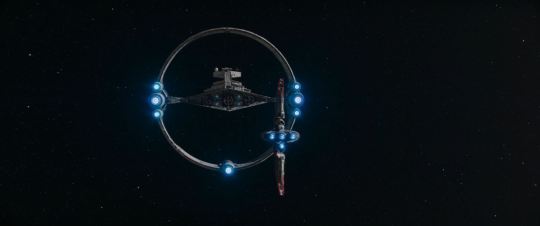

the 'eye of sion' tho
7 notes
·
View notes
Photo







Extragalactic (2022)
2 notes
·
View notes
Link
Join us for SpaceTime Series 27 Episode 69, where we uncover the latest cosmic revelations and scientific advancements.
First, we delve into a groundbreaking discovery by the Webb Space Telescope, which has identified the most distant galaxy ever observed. Located a staggering 290 million years after the Big Bang, this galaxy offers unprecedented insights into the universe's infancy and the formation of its earliest stars and galaxies. We explore the methods and implications of this discovery, including the galaxy's surprising brightness and the presence of dust and ionized gas.
Next, we discuss the announcement of a massive new collection of exoplanet discoveries. NASA's Transiting Exoplanet Survey Satellite (TESS) has confirmed 120 new exoplanets and identified six new candidates, bringing the total number of known exoplanets to over 6000. These findings offer a rich database for studying planetary properties and environments, particularly those that may harbor life.
Finally, we highlight new X-ray observations from NASA's Chandra X-ray Telescope, revealing dramatic changes in two famous supernova remnants: the Crab Nebula and Cassiopeia A. These observations provide stunning visualizations and valuable data on the dynamic processes occurring in these remnants.
Follow our cosmic conversations on X @stuartgary, Instagram, YouTube, and Facebook. Join us as we unravel the mysteries of the universe, one episode at a time.
Sponsor Offer
This episode is proudly supported by NordPass. Secure your digital journey across the cosmos with a password manager you can trust. Find your stellar security solution at https://www.bitesz.com/nordpass.
Listen to SpaceTime on your favorite podcast app including Apple Podcasts, Spotify, YouTube Music, or wherever you get your podcasts.
Support SpaceTime
Become a supporter of SpaceTime: https://www.bitesz.com/show/spacetime/support/
www.bitesz.com
#14#advanced#cosmic#dawn#deep#discovery#distant#extragalactic#galaxy#gse#infrared#jade's#james#near#redshift#space#spectrograph#survey#telescope#webb
0 notes
Text

The radial magnetic field around NGC 4631 (Golla and Hummel 1994)
#astrophysics#astroblr#radio astronomy#interstellar medium#magnetic field#physicsblr#extragalactic astrophysics
262 notes
·
View notes
Text

#my art#vierade#consider this an open interaction perhaps...... kirby oc havers feel free to have your oc be confused by this little extragalactic visitor
14 notes
·
View notes
Text
Stamets scene with Adira was so impactful for how short it was. Thinking of Stamets from S1 until now - nearly getting killed multiple times over creating the spore drive, starting out as kind of an asshole, losing the love of his life and then almost losing him again in season 2, his relentless pursuit of science in the last two seasons from the pathway drive to the Ten-C to the progenitors tech and obsessing over his legacy - only to have his real legacy stare him in the face and say ‘isn’t this enough?’ Such growth.
#star trek discovery#disco finale had several endings that would normally be corny and typical feel so earned#Stamets went across the extragalactic barrier and helped discover the Ten C and still wasn’t satisfied#yes he should keep his scientific spirit but there was always a part of it that was about his ego#and Adira tossed it back to him in a way that only a teenager could accomplish lol#it’s also fitting because back in the 23rd century we already know there’s a ship named after him#he’s already in the annals of history which is why again it would normally be corny but it fits
21 notes
·
View notes
Text
the comics i'm reading refer to events in the 2013 PS3/XBOX 360 game Star Trek and fam I have no memory of this game at all.

this was a game that was released? What if any impact did it have? cuz i'm betting very little.
The ONLY thing that even rings a distant bell is this ad:
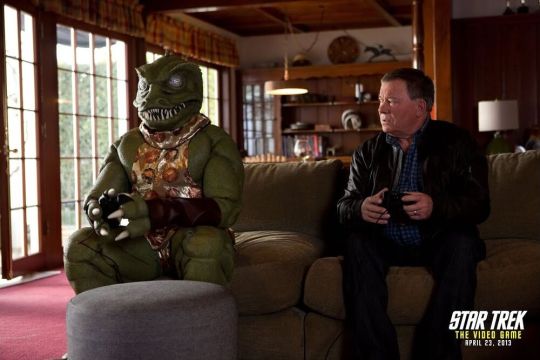
that tickles something in the back of my brain.
#A game was released as a tie in to Into Darkness#with extragalactic gorn? okay sure.#Abrams blaming the failure of STID on this game FEFrgtsdfredw yeah bud. sure. and not the...the bad movie you made#Star Trek#Star Trek 2013#video games
21 notes
·
View notes
Note
ANOTHER HANMA SIMPPP
what else am I supposed to expect from a daishou and matsun lover 😏
I AM NOT !!!
I WANNA STRANGLE THAT MAN !! SLIT HIS THROAT
mattsun lover. yes. daishou fucker. maybe. hanma simp? NAH
4 notes
·
View notes
Note
do you love me ? 🥺
get to know the blogger <3
was gonna be kinda nice and say "yeah most of the time"
but nooooow since you wanna come at me with the "u suck" bc i "exist" ..... ✨no✨
11 notes
·
View notes
Photo

NGC 6744: Extragalactic Close Up #NASA https://ift.tt/QbAtBjo
0 notes
Text
Galactic Gazetteer: Engaria

Type: energised planet
Location: the Outer Galaxies, millions of light years from Mutter's Spiral
Inhabitants: Engarians
Appearance: "The Runaway" (2019 game/webcast)

Fun fact: the Engarians were energy-based life forms. When outside their own galaxy, they risked turning imploding into black holes when stressed.
Another fun fact: the Thirteenth Doctor's brief companion Volta ran away from Engaria. His parents were worried about him. You know, because of the black hole thing.
4 notes
·
View notes
Text
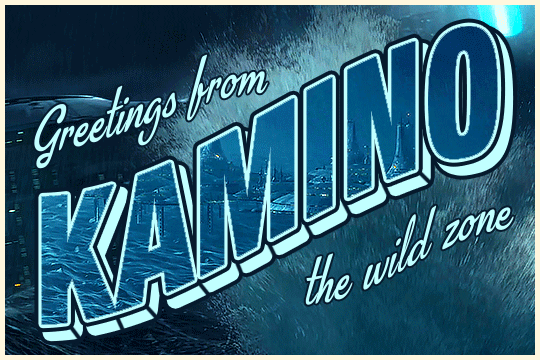
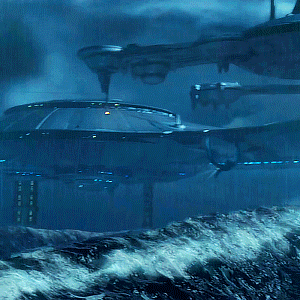
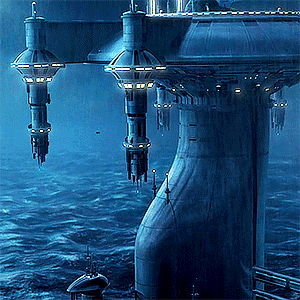
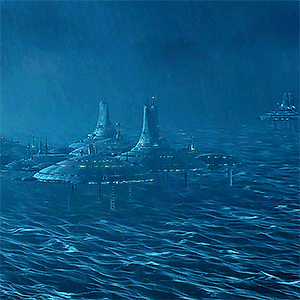


@prequelsnet prequels appreciation week: day 3 — locations
↳ Kamino
KAMINO was an aquatic planet located in a remote star system in wild space of the galaxy. it was sometimes considered extragalactic due to being in close proximity to the rishi maze dwarf satellite galaxy. it was inhabited by the kaminoans—a race of tall, elegant beings with long necks who were regarded as a mysterious species that tended to keep to themselves. they were also known for their cloning technology, which was used to create a clone army for the galactic republic.
— x
#sw#swedit#star wars#starwarsedit#paw24#starwarsblr#ours#by em#gif#usergif#userlumi#starwarscolors#gifstarwars#tw: flashing#tusererika#tusermelissa
591 notes
·
View notes
Text
"I think we underestimated the human population by eight or nine orders of magnitude."
The war room was reeling. The human population had been estimated in the mere hundred billion range. They should barely have had enough of an economy to field two light cruisers, least of all the goddamn armada that was ravaging the inner worlds. After the alpha strike, the human flotilla should’ve been completely crippled. Instead the number of ships they were fielding kept growing.
Tan-Hauser was the first target struck by a human attack, and they reported seventeen craft before they lost comms. Attican was hit just three days after that, but their reports already showed numbers above ninety. Any doubts that the fleet was growing were eliminated when Outpost Batan reported 1,217 FTL pings two days before the loss of Kira.
The number reported was so big it was written off as a sensor malfunction. Twenty-five billion souls lost, all because nobody in the war room could face reality.
They were going to face it now. The Kirarian in front of them was the primary sensor engineer for the Batan outpost, a specialist with more expertise in analyzing space lanes than warships. He’d been up for at least the last two days, poring over the sensor data, and only now was ready to begin to share his findings.
From the pain in his multifaceted eyes, it was clear he was still reeling from the loss of his homeworld.
Seeing that he had the room’s attention, he began to speak. The translation units each member of the war council had implanted experienced a moment of lag as they struggled to convert the almost musical tonal humming of the Kirarian tongue to more common galactic speech.
"The simplest data that can be analyzed from an FTL ping is the distance that the ship traveled before dropping to sublight. The contracted space in front of the craft traps small particles, even light itself for a short period, compressing its wavelength and then releasing it when the field disengages."
The war room nodded along. The explanation was mildly technical, but anyone that had traveled on an FTL shuttle before knew the hazards of exiting FTL directly in front of your home destination. Blasting your home station with a wave of alpha, beta, and ultraviolet rays was hardly a warm welcome.
The engineer continued.
“The… issue with this is that we’re used to the majority of the ping being in the UV spectrum. We aren’t entirely sure what the spectrum of the signals we got from the ships were because Batan station can only detect up into the low gamma range, but that’s still what the majority of the human’s FTL pings were detected in. That’s at least ten billion times the frequency that we’re used to. Since the frequency of the burst can be roughly modeled by multiplying the mean radiation per unit distance by the length of the path, that implies one of two things: That the human ships are either traveling through areas with ten billion times the standard background flux, or that they are traveling extragalactic distances.”
The engineer paused for a few seconds at that statement. The pain of loss still shone in his gemstone eyes, but something more immediate was beginning to take center stage: Fear.
“Because the craft is essentially throwing… well, normally it would be the next three or four days worth of cosmic background radiation at you. In our case it’s more like several decades. But because it’s just giving you an advance on your normal cosmic background radiation, you can track the void in the next several days' worth of background noise to determine the ship's approach vector. The 1,217 crafts that arrived weren’t coming from the same spot. There were actually hundreds of converging vectors, but more importantly…”
He trailed off, a small 3D model of the local space appearing in the center of the holo table. A spiked ball of vectors protruded from the galactic disk, each piercing cleanly through his former homeworld.
His voice cracked a little, the hum turning into a hiss. The translator tech paused a moment too, struggling to convey the subtle emotional cues into the message.
“They’re all coming off the galactic disk. That doesn’t just mean that we’re surrounded, that doesn’t just mean that we’re outnumbered… It means that each attack that we’ve seen up to this point is from an entirely separate group. What we’ve been mistaking for fleets, I believe, are simply the beginning trickles of their exploratory forces. Each of the sites that they’ve targeted hasn’t been of significant strategic importance; they’ve just been sites with unusually strong output signals. I think they’re just using our transmission stations as makeshift beacons for their FTL jumps."
He took a deep breath to steady himself before providing his final thought.
"I think we underestimated the size of the human population by eight or nine orders of magnitude.”
There was a heavy silence in the war room as that last sentence was processed. The engineer was already out the door before he heard the panic begin to set in.
Part of him felt a little guilty. It would’ve probably been kinder for them to go out not knowing what was about to hit them. Still, it wasn’t often you could force people with this much power to realize that they’d just lost everything.
There was a bitter satisfaction in that.
#hfy#humanity fuck yeah#humans are space orcs#science fiction#we are the swarm#scifi#writing#writblr#we are the cosmic horror#The goal was to imply that we have colonized hundreds of other galaxies#Babylon-HFY#Babylon-TopPick
430 notes
·
View notes
Text
ART's Walls
For any network system with capabilities to communicate, it is very important that it has walls (basically, firewalls) to protect it from potential attack from the outside.
It is interesting to note how the way ART is controlling its walls between itself and Murderbot seems to demonstrate the level of its trust and their intimacy.
[Artificial Condition]
Super machine-intelligence like ART obviously needs to protect itself carefully from a potentially dangerous threat like a rogue SecUnit. So, when Murderbot first meets ART in Artificial Condition, it cannot see what ART really is. It only drops its wall for .00001 of a second - just to show how powerful it is.
They become close so that Murderbot can interpret ART's reactions in its feed quite well, but the walls are still there.
------------------------------
But the presence in the feed was too big and diffuse for a human or augmented human, I could tell that much even through the feed walls protecting it.
[...]
It said, You’re a rogue SecUnit, a bot/human construct, with a scrambled governor module. It poked me through the feed and I flinched. It said, Do not attempt to hack my systems, and for .00001 of a second it dropped its wall.
It was enough time for me to get a vivid image of what I was dealing with. Part of its function was extragalactic astronomic analysis and now all that processing power sat idle while it hauled cargo, waiting for its next mission. It could have squashed me like a bug through the feed, pushed through my wall and other defenses and stripped my memory. Probably while also plotting its wormhole jump, estimating the nutrition needs of a full crew complement for the next 66,000 hours, performing multiple neural surgeries in the medical suite, and beating the captain at tavla. I had never directly interacted with anything this powerful before.
------------------------------
[Network Effect]
In Network Effect, it was not explicitly referred to as walls, but I got the feeling that when ART allowed Murderbot access to all its cameras, it was at least dropping a large portion of its walls. Hidden cameras are a very important part of its security system after all.
It was ART's way to show its trust to Murderbot, and Murderbot understands this.
------------------------------
I suddenly had views all over the ship. ART had given me access to its cameras. I snarled, “Stop being nice to me!”
------------------------------
[System Collapse]
By the end of Network Effect, when Murderbot (implicitly) accepts ART's proposal of marriage to join the next mission, they have reached the level of intimacy where ART does not seem to think it is necessary to have a wall between them.
So, in System Collapse, when Murderbot decides to accept communication request from AdaCol2, it is Murderbot who suggests having a wall between them, to protect ART.
------------------------------
ART-drone threw out an extra comm- and feed-block wall between us and the shuttle and I said, Let’s do full containment protocol. Which was the protocol we’d come up with (we being ART, Martyn, and Matteo and me, before my incident when I effectively became useless) for dealing with potential contamination situations.
Let’s, ART-drone said, which was its way of being nice and not letting me know that it didn’t need my advice about which containment protocol to use. Then it made it worse by adding, Be careful. The wall went up and I was alone in the dark except for my two drones, both on standby now, and the Pre-CR system.
------------------------------
And ART cannot drop the wall fast enough at the first chance of excuse.
------------------------------
ART-drone dropped the wall between us, though not the one protecting the shuttle’s systems. Is that a good idea? I asked it. Is containment protocol for everybody but you?
After it sees the file it will either attack us or ask for further contact, ART-drone said. The wall will have to go down either way.
Right, fine, whatever.
------------------------------
Not to mention that ART is practically constantly inside Murderbot's walls throughout System Collapse, (ostentatiously) to monitor its stats, because of [redacted].
And considering how private Murderbot is, it is very significant that it seems completely okay with that. Murderbot has become more vulnerable with self-doubt with [redacted], but it really does not show a least sign of discomfort in having ART there at all times.
#the murderbot diaries#murderbot#asshole research transport#perihelion#meta#tmbd#walls as a sign of trust and intimacy#murderhelion#artmb
79 notes
·
View notes
Photo

2024 February 18
Hoag's Object: A Nearly Perfect Ring Galaxy
Image Credit: NASA, ESA, Hubble; Processing: Benoit Blanco
Explanation: Is this one galaxy or two? This question came to light in 1950 when astronomer Arthur Hoag chanced upon this unusual extragalactic object. On the outside is a ring dominated by bright blue stars, while near the center lies a ball of much redder stars that are likely much older. Between the two is a gap that appears almost completely dark. How Hoag's Object formed, including its nearly perfectly round ring of stars and gas, remains unknown. Genesis hypotheses include a galaxy collision billions of years ago and the gravitational effect of a central bar that has since vanished. The featured photo was taken by the Hubble Space Telescope and reprocessed using an artificially intelligent de-noising algorithm. Observations in radio waves indicate that Hoag's Object has not accreted a smaller galaxy in the past billion years. Hoag's Object spans about 100,000 light years and lies about 600 million light years away toward the constellation of the Snake (Serpens). Many galaxies far in the distance are visible toward the right, while coincidentally, visible in the gap at about seven o'clock, is another but more distant ring galaxy.
∞ Source: apod.nasa.gov/apod/ap240218.html
132 notes
·
View notes